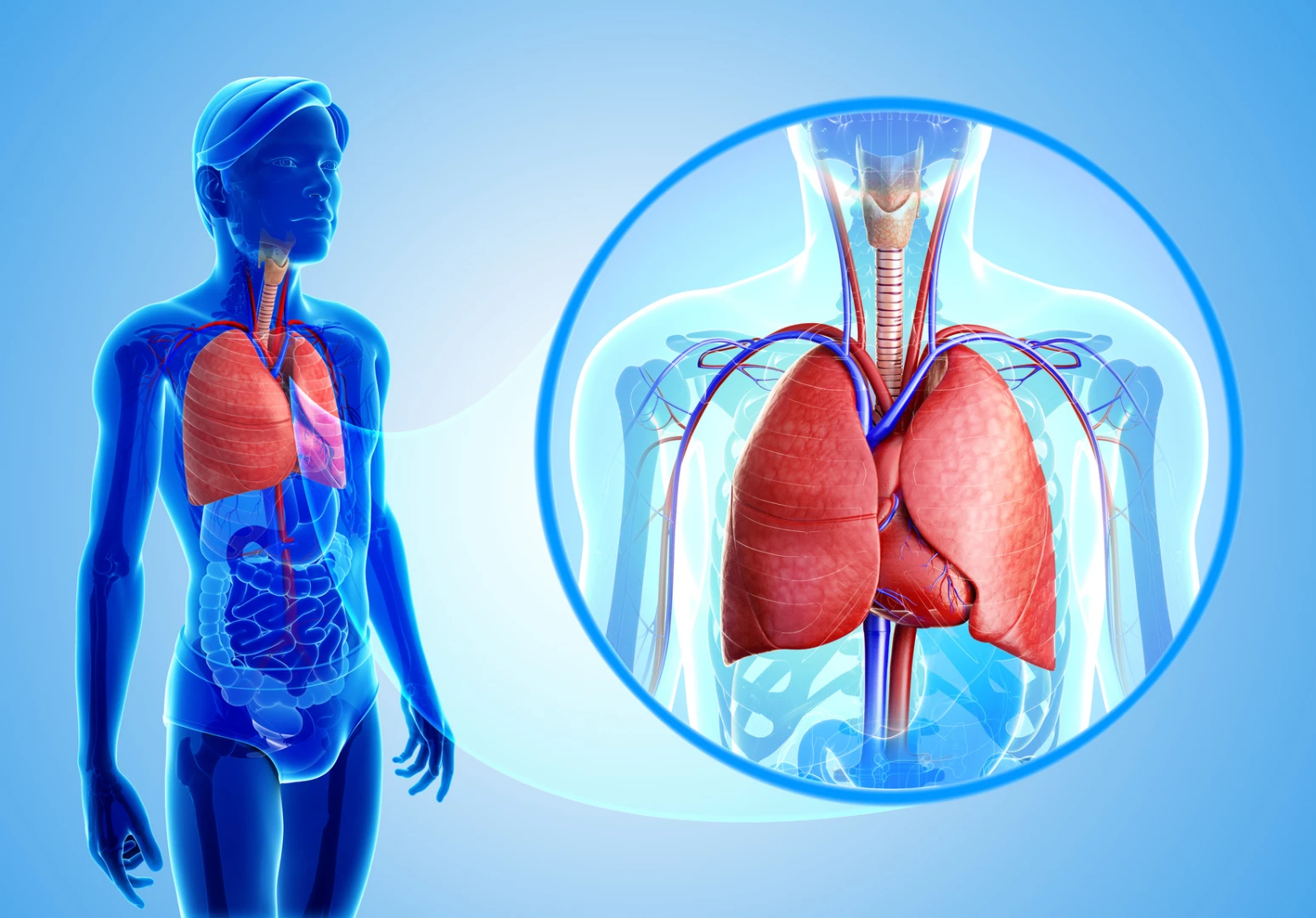Practical Pointers: Your Respiratory System is More Than Just a Pair of Lungs

When we inhale, our breath delivers air to our lungs, which extract oxygen for use as fuel. And when we exhale, we release carbon dioxide, a waste product delivered to our lungs from our bloodstream for removal. To make this all happen, many different organs and systems in your body work together to enable us to do what we simply call “breathing.”
How Your Airways Work
The openings of the nose and nasal passageways, the mouth, the pharynx (back of throat), larynx (the passageway by the vocal cords), trachea and bronchial tree that leads to the air sacks inside your lungs make up the airways that allow oxygen to come into your lungs and carbon dioxide to be released from them. Breathing practices will help you learn whether the upper and lower passages are open and relaxed. If not, you can use calming breath practices or stress management tools to try to reopen them. You can also use stress management tools to support your immune system, lowering the chances of infections, such as sinusitis, bronchitis and pneumonia, and for those with asthma and allergies, to relax the bronchial tree so air can flow more easily through it.

How Your Lungs Work
Although our lungs are essential to breathing, they actually depend on the contractions of our respiratory diaphragm and other supportive muscle groups to draw air in for the inhalation and push it out for the exhalation. So to maintain the health of our lungs, we can use our asana and breathing practices to support the health of the muscles, connective tissue, and bones that surround the lungs, and work on maintaining healthy breathing patterns.
How Your Respiratory Diaphragm Works
Positioned just below the lungs, the diaphragm is the main muscle of breathing, which allows the lungs to expand on the inhalation and deflate on the exhalation. If you are relatively active and healthy, the diaphragm does not need any special “exercising.” However, if you have been sedentary, suddenly gained weight, suffered from periods of inactivity or developed poor posture, your diaphragm may not be working optimally. In these cases, you can use your asana practice to stretch areas of restriction and re-establish healthy posture. And you can use breathing practices, such as gradually lengthening your inhalation and exhalation, to improve your lung capacity over time.
How Your Chest Cavity Affects Respiration
Made up of your ribs, breastbone and spine, your chest cavity provides the housing for your lungs and respiratory diaphragm (as well as your heart and its arteries and veins, and your esophagus). The muscles and fascia that connect the bones in and around your ribcage assist in your breathing by expanding your chest cavity on your inhalation and compressing your chest cavity on your exhalation. For a healthy person, a well-balanced yoga practice will help you maintain optimum functioning of your chest cavity. For a person who has gained weight, been sedentary or inactive, or has practiced poor posture, asana practices can improve the strength and flexibility of your chest cavity and restore your posture to a healthier state.
What Your Circulatory System Does
To carry out its functions, your respiratory system depends on your circulatory system. The circulatory system circulates blood that has passed through your lungs to the trillions of cells in your body to provide them with oxygen for fuel. And it returns blood containing waste carbon dioxide from the cells back to your lungs for removal. Therefore, yoga practices that support a healthy cardiovascular system also support your respiratory system.
Your Breath, Your Brain and Your Nervous System
Both your lungs and the muscles that stimulate your inhalations and exhalations are in continuous communication with your brain through your nervous system. Your brain monitors your levels of oxygen and carbon dioxide moment by moment to modify the rate and depth of your breathing to match the energy demands of the activities you engage in. Your brain then sends messages to your breathing muscles to either speed up or slow your breathing. So without good communication between our brains and respiratory systems, we simply could not breathe.
In addition, chronic stress can disrupt the normal balance between your brain and your respiratory system by causing unhealthy breathing patterns. That’s because when you are stressed and triggering your fight-or-flight response, your brain reacts by stimulating your respiratory system to take in more oxygen to prepare you for action. But if you’re chronically just “feeling” stressed, you don’t actually need to take action, though you’ll still be breathing as if you do. By using yoga stress management techniques and spending more time in a state of relaxation, you can rebalance your brain’s input to your respiratory system and re-establish healthier, more appropriate breathing patterns.
On a very simple and urgent level, we all need to breathe well to live. So using yoga practices to support the optimal functioning of your respiratory system and the systems with which it is connected will provide benefits for your overall health.
Study with Baxter Bell, MD and YogaUOnline – Yoga for Your Brain: A New Formula for Healthy Aging
Join Baxter Bell, MD on YogaUOnline’s Premium Practice Channel.
Reprinted with permission from yogaforhealthyaging.blogspot.com
 Baxter Bell, MD, is a yoga teacher and educator, physician and medical acupuncturist. These days he focuses on teaching yoga full time, both to ordinary students of all ages and physical conditions, and to the next generation of yoga teachers, to whom he teaches anatomy and yoga therapy along with his accessible, skillful style of yoga. Baxter brings a unique perspective to his teaching, combining his understanding of anatomy and medicine with his skill at instructing people from all walks of life and all levels of ability. Baxter is the co-founder and writer for the popular Yoga for Healthy Aging blog, where he shares his knowledge of medical conditions, anatomy, and yoga with practitioners and teachers across the world. In addition to being a frequent presenter at Yoga Journal Alive events and yoga conferences such as IAYT’s SYTAR, he is often quoted as an expert on yoga and health by major national news outlets such as The Washington Post and Wall Street Journal. To learn more, visit www.baxterbell.com, www.yogaforhealthyaging.blogspot.com, and his YouTube channel Baxter Bell Yoga.
Baxter Bell, MD, is a yoga teacher and educator, physician and medical acupuncturist. These days he focuses on teaching yoga full time, both to ordinary students of all ages and physical conditions, and to the next generation of yoga teachers, to whom he teaches anatomy and yoga therapy along with his accessible, skillful style of yoga. Baxter brings a unique perspective to his teaching, combining his understanding of anatomy and medicine with his skill at instructing people from all walks of life and all levels of ability. Baxter is the co-founder and writer for the popular Yoga for Healthy Aging blog, where he shares his knowledge of medical conditions, anatomy, and yoga with practitioners and teachers across the world. In addition to being a frequent presenter at Yoga Journal Alive events and yoga conferences such as IAYT’s SYTAR, he is often quoted as an expert on yoga and health by major national news outlets such as The Washington Post and Wall Street Journal. To learn more, visit www.baxterbell.com, www.yogaforhealthyaging.blogspot.com, and his YouTube channel Baxter Bell Yoga.



